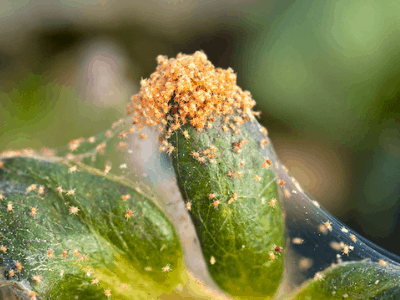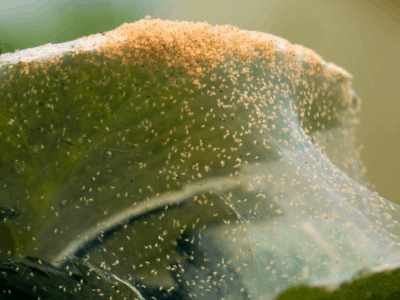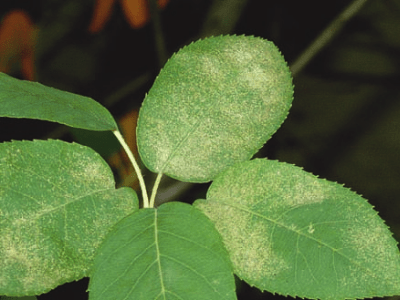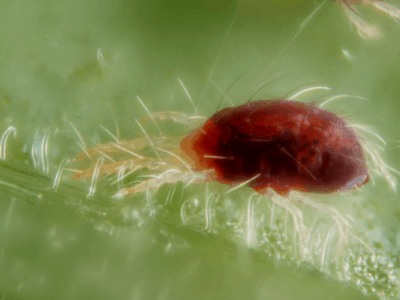Get Rid Of Spider Mites!
How Can We Get Rid Of Spider Mites, Especially From Snake Plant
These tiny pests infest houseplants and outdoor plants. They look like little spiders, and they can cause a lot of damage to plants.
Spider mites can create webs on plants, and they can also leave brown or black spots on their leaves.
Spider mites are members of the Tetranychidae family; they aren’t insects, but instead arachnids.
Other types of spider mites can be red, green, brown, or yellow in color. However, most spider mites are small, white creatures.
The spider mite looks like a tiny bug, but they are hard to spot. They usually live under leaves, spinning a silky web to protect themselves.
A spider mite infestation is typically visible by spider webbing. If the plant is severely infested, spider mite damage…
….can also include brown or black spots on leaves. The spider mites that are damaging your plant can be identified…
….by placing white paper under its leaves and gently shaking it. Spider mites will look like specks of ground pepper.
We’ll provide you with an easy guide to treating spider mites on plants.
Along with natural spider mite treatments, we’ll explain how to prevent spider mites from attacking your houseplants.
Here we have the story from Jackson about his experience encountering spider mites on his snake plant!
Prices pulled from the Amazon Product Advertising API on:
Product prices and availability are accurate as of the date/time indicated and are subject to change. Any price and availability information displayed on [relevant Amazon Site(s), as applicable] at the time of purchase will apply to the purchase of this product.
Let us hear Jackson’s story
I was on the hunt for a new house plant when I stumbled upon this awesome snake plant!
It had such nice dark, rich green leaves that were just begging to be touched.
Without no doubt, I buy this plant. When I got home and tried to find it’s perfect spot in my room…
….I put my snake plant and I go to do something else. After done I got back to the room and I noticed some little bugs crawling around.
After looking closer, they turned out to be spider mites! They like to hide in the spaces between the leaves…
...so you wouldn’t notice them right away.
After I do the cleaning up, I need to build some protection to keep the spider mites away from my snake plant!

Spider mites come in several varieties. There’s the Southern red spider mite, the carmine spider mite, the strawberry spider mite, the spruce spider mite. Most common of all is the two-spotted spider mite. Yellowish-orange with one dark spot on both sides of its body, these mites live together in colonies. They cling onto the undersides of leaves and feed off the plant’s chlorophyll.
Andréa Butler, author from LawnStarter.com
Here’s the main thing!
What Do Spider Mites Look Like?

A spider mite looks the same as a miniature white, red, tan, or black spider. Spider mites, which are about 1-mm long…
…are difficult to see on plants. In general, spider mites are first observed in webs before they are seen as mites.
A large spider mite infestation makes the mites more noticeable. It is easy to identify spider mites by their oval-shaped bodies.
The tiny “bugs” have eight legs because they are arachnids, but do not look like regular spiders.
They build webs like spiders, which is how you identify them on plants.
Most spider mites on home plants can be seen through the leaves. They are almost as small as a period…
…at the end of sentences. However, if you have a widespread infestation, the mites look more like tiny dots under the leaves.
Spider Mites Life Cycle
They start out life as a tiny egg which turns into a larva and then an adult. It may take between five…
…and twenty days for spider mites to reach maturity. Adult spider mites can live for four weeks.
Female spider mites may produce hundreds of eggs during their lives. In hot, dry climates, spider mites multiply rapidly.
A female spider mite can mature within days and begin laying 25 eggs a day.
A severe infestation of spider mites in plants can result in multiple generations overlapping.
A spider mite is not usually found in potting soil; instead, it prefers the underside of leaves….
..where it remains undetected for weeks. Keep the soil slightly moist, though, because spider mites prefer dry conditions.
Water your house plants properly to keep the soil slightly moist, but not too wet…
…otherwise you’ll encounter more problems.
Go on…
How to Identify Spider Mites

Spider mites are often identified by their thin webs, which they produce to protect themselves and their young.
Look for webs under leaves and at leaf joints. When infestations get out of control, you will see many dot….
…like creatures crawling beneath their webs. When you identify spider mite infestations, look for silk…
….like threads dangling from leaves. At the beginning of an outbreak, you’ll only see a few web-like threads.
Although you are unlikely to see any spider mites in the early stages, as their activity increases…
…..you will notice more extensive areas of webbing and tiny white insects on the webs.
When spider mites damage plant tissue by biting, you may see numerous tiny white or brown dots under leaves.
Spider mites use their piercing mouth parts to bite into plant tissue. As a result, leaves could appear bleached…
…discolored, or yellow. A 10x hand lens, whether magnified or lower, is required to accurately identify spider mites:
Look for an oval-shaped body with eight tiny legs; spider mite eggs are transparent and round.
After the first sign of plant webbing, identify spider mites to resolve the infestation.
The white paper technique can be used to identify spider mites as well. Put the paper under plant leaves.
Tap the leaves to see if any tiny spider mites fall on the paper. If there are spider mites, they will look like ground pepper.
Spider Mite Plant Damage

Spider mites infest houseplants and outdoor plants and cause extensive damage. Their webs coat leaves…
….in silky spider webs, and their sap-sucking feeding causes broken leaves to turn brown or yellow.
If left untreated, spider mite damage can cause plants to die.
Spider mite leaf damage
A spider mite infestation begins with tiny spots on plant leaves. As damage progresses, these spots…
…become more pronounced, forming a pattern and causing plant leaves to yellow and curl. Eventually, they fall off.
Spider mite damage on crops
It is also common for spider mites to destroy outdoor plants and vegetables. A host of mites can destroy crop leaves…
…. leading to a lower crop yield. Spider mite leaf damage can be seen on roses, annual plants, legumes, soybeans, and sugar peas.
Although spider mite webs are non-damaging to plants, they provide an environment in which these pests thrive.
Here’s the thing…
Where Do Spider Mites Come From?

It is difficult to prevent spider mites because they are so tiny. They can come from anywhere, usually from new plants…
….brought into the home that are infested, but can also come from unsterile potting soil…
…or get blown on plants outside in summer. As well as infesting your home through your clothes-especially…
…if you’ve just come from the garden center-weapon mites can also enter your house through your pets.
But you’re most likely to infest your house through contaminated plants.
How to Get Rid of Spider Mites on Plants
You should isolate the plant before beginning the process of killing spider mites on your houseplant.
In order to get rid of spider mites, you shouldn’t use pesticides. Synthetic chemicals are often resistant…
…and pesticides are rarely effective. If you should avoid commercial pesticides, what can you use to get rid…
….of pesky plant-destroying pests? Fortunately, there are many natural remedies for spider mites that do not damage plants.
A spider mite infestation on plants should first be addressed by isolating the affected plants from other plants.
Removing the plants from other plants will prevent the infestation from spreading further.
Prune Affected Leaves
Infected leaves and stems can be pruned for natural spider mite removal; discarded parts can be thrown…
….in the trash outside your home to prevent the mites from infecting other plants in your yard or home.
Even after pruning the affected leaves and stems, you should still treat the rest of the plant with natural spider mite control methods.
These could include hosing the plant down, treating it with neem oil, applying rubbing alcohol….
…or wiping leaves with insecticide soap.
Shower Plants
Using a strong jet of water can remove spider mites, as well as unsightly spider webs, from your outdoor plants.
You can also spray your bathroom shower to remove spider mites from indoor plants.
Keep reading…
Soap Spray
Castile soap or other liquid dish soap is effective in killing spider mites on plants.
Make large amounts of the pesticide and spray it liberally on the plants’ leaves until the mites are gone.
It is possible to wipe the plant with the soap solution and remove spider mites.
Reapply the solution as needed until all signs of the mites have disappeared.
The soapy liquid coats the mites’ bodies causing them to suffocate and kill them. The soap’s fatty acids penetrate….
…the pest, causing them to dehydrate and die. It is suitable for organic gardening, safe for children and pets.
In addition to eliminating houseplant pests like aphids, mealybugs, scale insects, and whiteflies…
….soaps can also kill other houseplant pests.
Neem Oil
Make a spider mite spray solution by mixing neem oil, a little Castile soap, and water.
Spray the resulting solution on leaf surfaces. Neem oil and soap are both natural pesticides.
Neem oil formula for an organic spider mite spray includes two teaspoons of neem oil mixed with one teaspoon Castile soap.
Spray liberally under leaves, on stems, and anywhere else signs of spider mites are visible.
Neem oil, a popular natural pesticide, is non-toxic to birds, worms, humans, or pets.
Neem oil kills spider mites by disrupting the hormones of these pesky houseplant pests.
Go on…
Apple Cider Vinegar Spray
Vinegar, which is extremely acidic, is poisonous for plant pests, like spider mites. You can use white vinegar if needed.
Vinegar kills spider mites and other insect pests by killing their eggs.
A spider mite spray can be made by mixing 1/4 cup white vinegar, 1 tablespoon baking soda…
….and 2-3 drops of liquid dish soap in a quart of warm water.
Spray the mixture wherever you see evidence of spider mite activity until it is fully gone.
Rosemary Oil Spray
An essential oil of rosemary can be used to treat spider mite infestations. It is nontoxic to humans and pets, but can be lethal to spider mites.
Dilute a teaspoon of rosemary oil in a quart of water and spray to treat a spider mite infestation.
Using rosemary oil for two-spotted spider mite control on tomato plants proved effective in one scientific study.
The natural product was low in toxicity and safe for use on edible plants.
When making your own rosemary spider mite spray at home, you may need to experiment a bit…
….to get the perfect concentration of rosemary oil.
Rubbing Alcohol
Putting some 70% isopropyl alcohol on a clean cloth and wiping the underside of plant leaves will kill spider mites.
Alternatively, you can mix one part rubbing alcohol with one part water and spray it directly on the spider mites.
In order to protect your houseplant’s sensitive leaves, dilute the alcohol spray to a 1:1 alcohol to water ratio…
…if you notice that leaves show signs of burn. Using rubbing alcohol to kill mealybugs, whiteflies…
…and aphids on your indoor plants is also a good idea.
Release Beneficial Insects
Beneficial insects such as ladybugs can control spider mites in your garden. Ladybugs feed on insects-like arachnids…
…and can help to reduce their numbers. Predatory mites can also be used in combination with other spider mite control techniques.
Next up…
How to Prevent Spider Mites on Plants
If you carefully inspect plant leaves before bringing them indoors, high humidity and frequent leaf-blowing…
…create an environment in which spider mites are prevented from growing on houseplants.
Regular houseplant care and vigilance will prevent spider mite infestations.
Keep humidity high
Keep your houseplants in high humidity to prevent spider mites from breeding on them.
Mist leaves regularly, place plants on pebble and water trays, or utilize a humidifier. Make sure soil doesn’t dry out, and water regularly.
Thoroughly check new houseplants
You can prevent spider mites from entering your home by thoroughly inspecting new plants.
Pay attention to signs of spider mite activity such as silky webs, brown leaf spots, or tiny dots on the underside of leaves.
Make sure your houseplants are bug free before you bring them back inside.
The last thing you want is to bring in spider mites when you bring them back in.
Last but not least…
Wipe plant leaves regularly
Wiping houseplant leaves with a damp cloth helps keep spider mites at bay for two reasons: first, it humidifies leaves, and second, it removes tiny mites before they have a chance to do any damage to the plants.
Prices pulled from the Amazon Product Advertising API on:
Product prices and availability are accurate as of the date/time indicated and are subject to change. Any price and availability information displayed on [relevant Amazon Site(s), as applicable] at the time of purchase will apply to the purchase of this product.
Conclusion
Last thing for sure. This plant need to be care carefully, remember all plant need the “love” too.
Alright that’s all for today! Do you have any questions about all of this?
Or do you want to add some method for getting rid of spider mites from houseplant?
Let me know your recommendation from the comment below. Find out more about gardening from us!
I hope you can now take care your plant and it’s growing big and healthy!
Thanks for reading this article! Bye!



